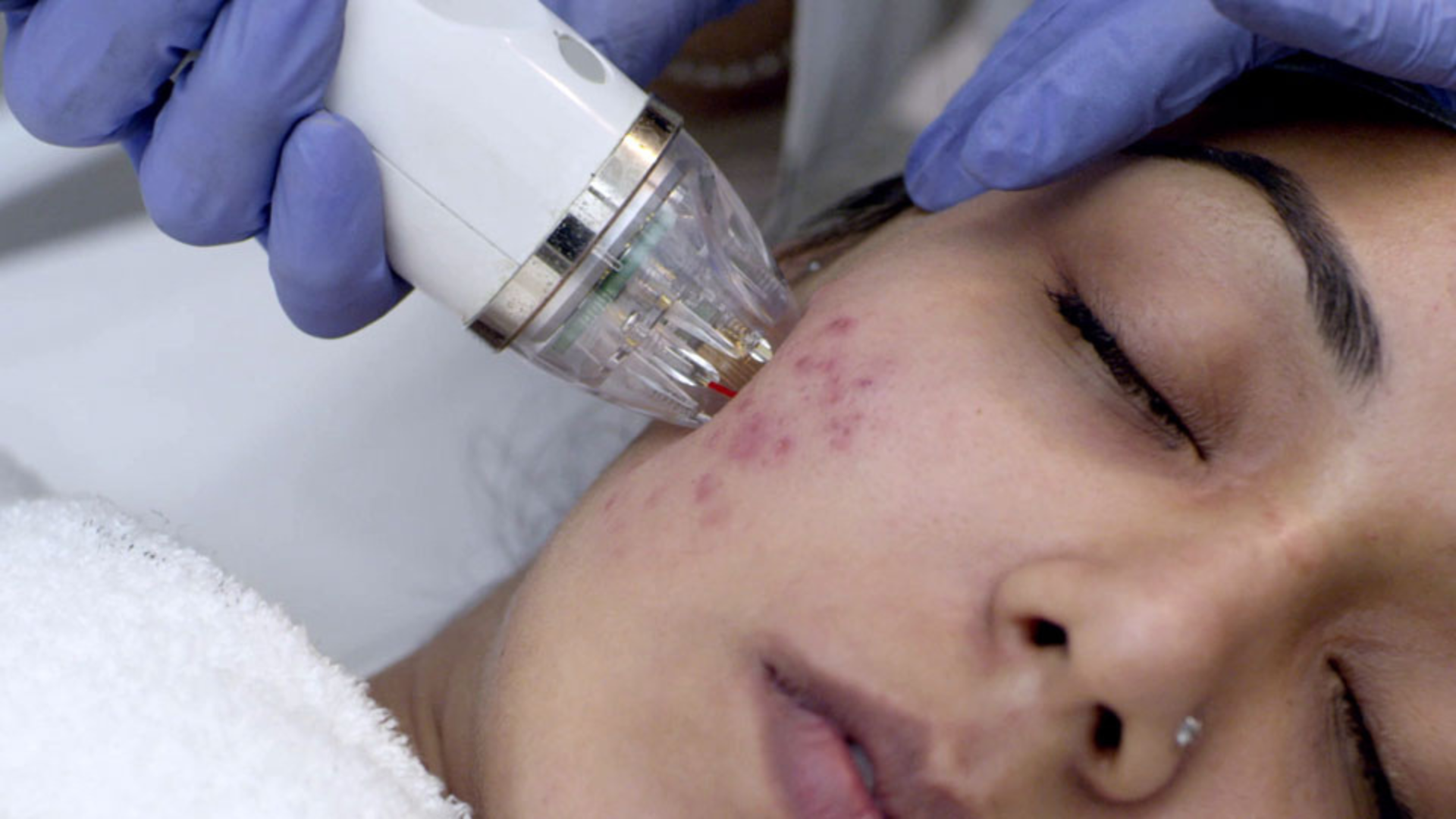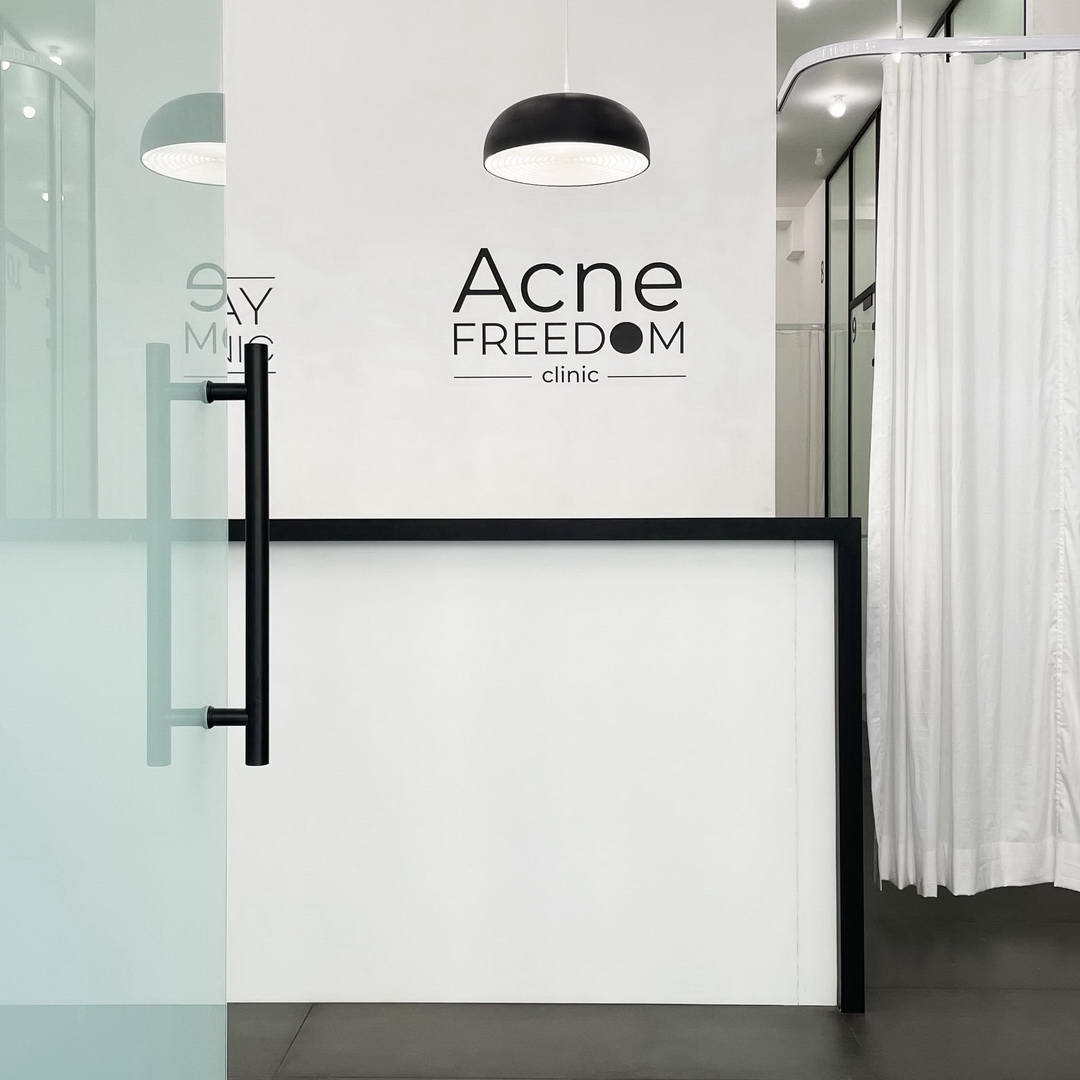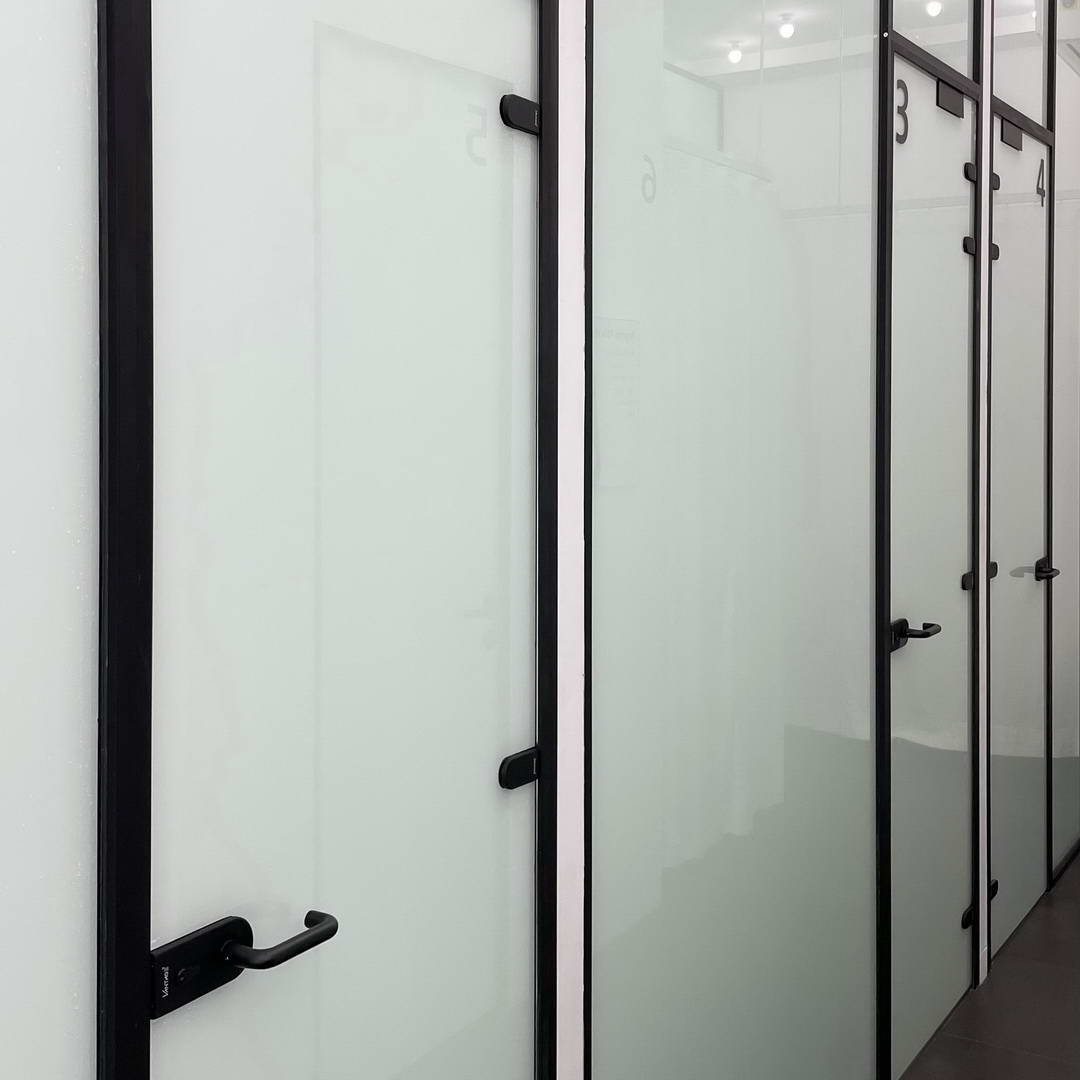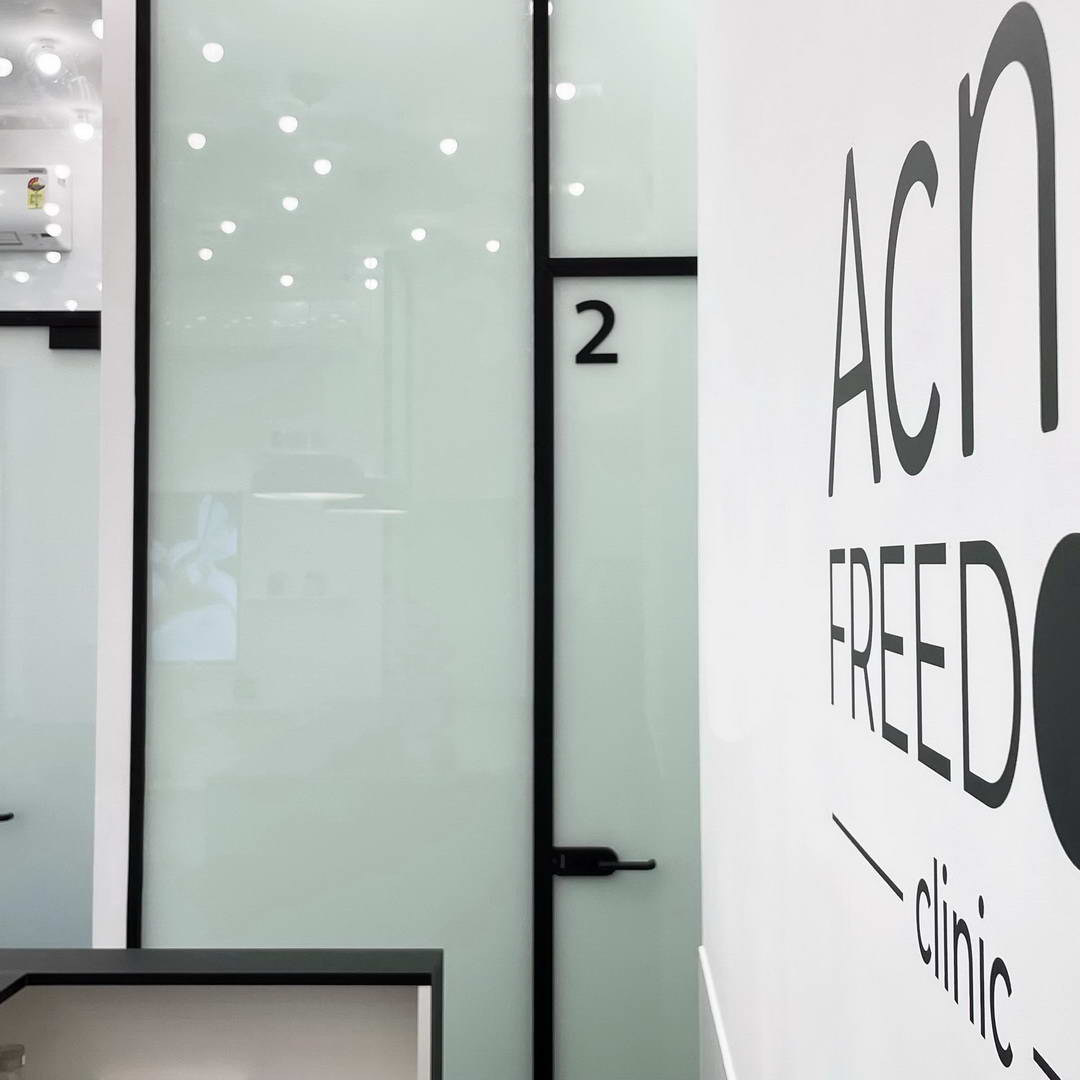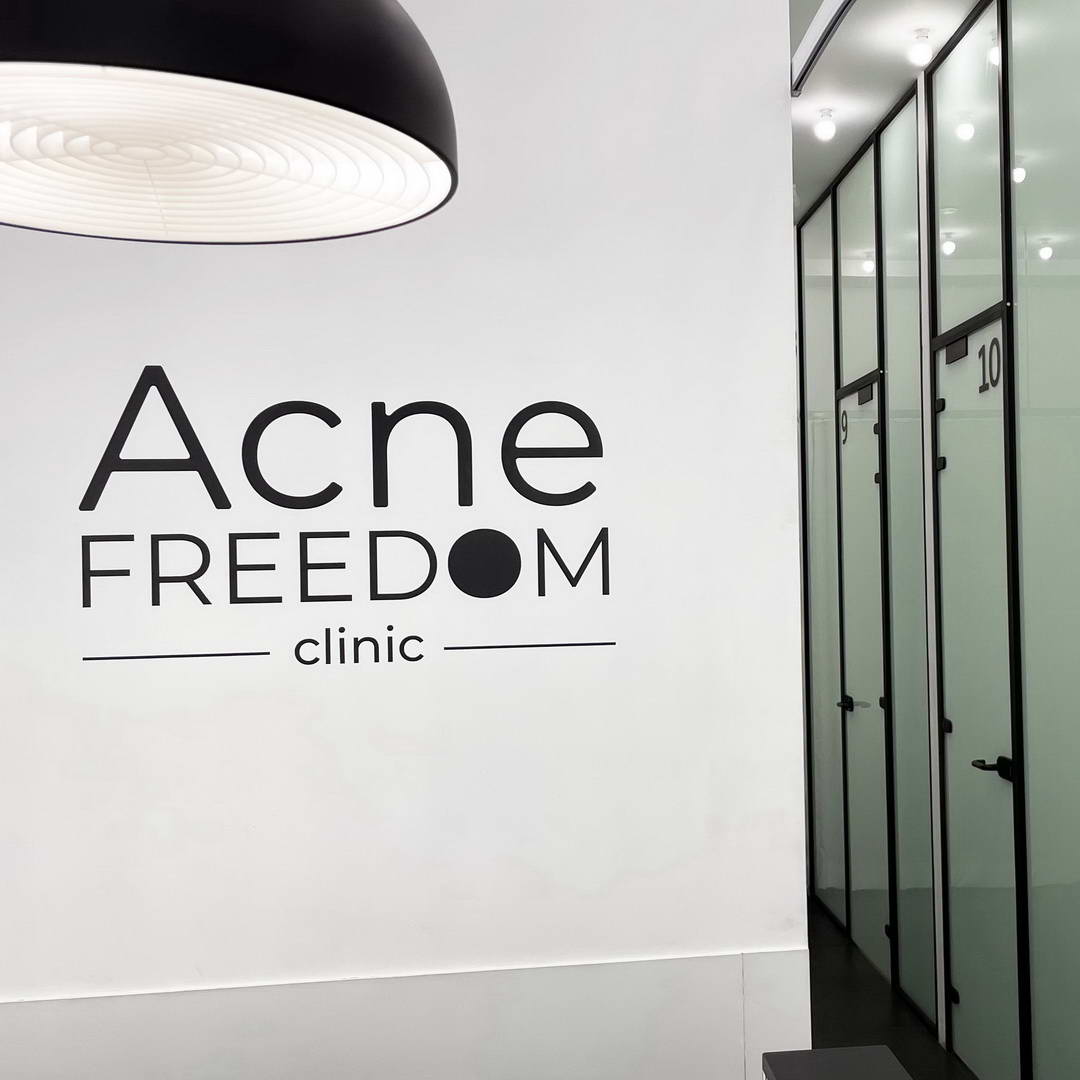Laser resurfacing
This type of method uses vaporisation to remove the top layer of the affected acne scar area. The appearance of scars reduces drastically when you go through laser resurfacing. Removing this layer can produce new cells and levels the skin. This kind of treatment is also useful for sun damaged skin and wrinkled skin.
Another treatment available is fractional laser scar treatment. The entire skin is not treated with acne under this procedure instead only a fraction of the skin is fired up with laser energy. The skin left in between is not touched this increases the healing time and minimises the risk involved in this procedure.
The recovery period for this type of treatment is two weeks.
Chemical Peeling
Shallow scars can be improved with chemical peels. An acidic chemical peel is applied on the scar affected area to remove the outermost layer of your skin. This will give your skin a smoother outlook. Redness may remain for a few days after the procedure. You may experience temporary irritation or pigmentation after chemical peeling. The recovery time for the procedure is fairly less as compared to laser scar treatment.
Micro-needling MnRF

This scar removal treatment has been practiced in India for very long and is extremely suitable for Indian skin. Fine needles are used for creating small punctures in your skin for treating acne scars. As the skin heals there is production of collagen which lightens acne scars. This procedure leaves the epidemic layer quite intact as compared to other procedures. The full impact of this procedure may be visible after 6-7 weeks.
Microdermabrasion
This method of scar treatment is used for treating mild acne scars. A diamond coated vacuum is used for removing deposits from your skin and crystals are sprayed on your skin for exfoliation. This helps to lighten visible scars as it removes the upper layer of the skin. This scar acne treatment helps to multiply collagen production and increase healing process. Usually more than 10 sittings are required for clearing acne scars. The treatment may cause redness on the affected area which will gradually become the same colour as your skin.
Fillers
A component such as collagen, hyaluronic acid, or fat can be used for filling the depressed acne scars. These are extremely effective for scars that penetrate the depth of your skin but aren’t too deep. There are two types of fillers- temporary and permanent. Temporary fillers last for a period of 6 to 18 months while permanent fillers tend to last longer.
Fillers are ideal for filling up the volume of the lost skin due to acne scarring. Fillers help to level your skin and restore its lost volume. Skin fat may be used as fillers as they contain stem cells that accelerate regeneration process.
Injections
Clinical treatment for raised scars can include injecting medicine directly into the affected area. The thick and rash scars can become soft and flat with the help of this method. Raised acne scars can be difficult to treat therefore clinical method may be required for treating it methodologically. Often a patient that undergoes this type of treatment may be required to visit the clinic several times. Injections per say may be induced once a week depending on the intensity of the scar.
Skin grafting
Skin is taken from behind your ear to fill the scar and make it disappear completely. The skin gradually starts to become part of the new skin and the surface becomes even within a couple of days. You will start feeling visible difference in your skin within weeks.
Do’s of acne scar treatment
- Fibers are good for your health therefore including fiber in your diet can help remove toxins and open clogged pores. These clogged pores can develop acne scars because of toxins present in your body.
- Exfoliation can enhance the appearance of your skin where acne scars exist. It can clean the skin surface and eradicate dead skin cells thus reducing the depth of acne scars.
- Get clinical treatment for removing acne scars as non-surgical procedures are extremely helpful in the modern day.
- Use a sunscreen before you venture out into the sun. If you are undergoing acne scar treatment or have completed acne scar treatment, you are likely to damage your skin more by venturing out in the sun without applying SPF cream.
Dont’s of acne scar treatment
- Don’t overexpose your skin to sun as it may darken the acne scars and make them stand out.
- Excessive washing of scar affected areas can highlight the scars more.
- Picking and rubbing acne scars can make you prone to more acne as bacteria may spread through fingernails.
Types of acne scar
- Keloids: When your skin tries to heal itself and produces too many cells, they may form bumpy, discoloured and slightly uprooted scarring called keloids.
- Icepick Scars: Ever tried pricking a potato with a fork? Icepick scars somewhat resemble these indentations caused by the fork on a potato. Acne deprives you of collagen so when the skin tries to repair itself it leaves behind holes that penetrate deep.
- Rolling scars: If your skin consists of mounds and valleys, then you most probably have rolling acne scars. The texture of your skin becomes wavy when you are affected with rolling acne scars. These scars are a result of long-term inflammatory acne that develop because of cyst acne.
- Boxcar scars: These are shallow scars that appear after inflammatory acne. As compared to rolling scars, boxcar scars have sharper edges and leave deep indentation on the skin. It looks hideously like a fingernail has deliberately been pushed into your skin.
- Hyperpigmentation: This is typically not a scar, hyperpigmentation is the result of excess melanin produced by your body that leaves behind reddish marks. The surface of the skin reflects the pigmentation which is the extra melanin produced by your body.
How does acne scar differ from acne mark?
Marks are temporary whereas scars are permanent that can only be removed by professional acne scar treatment. Scars can be categorised in two forms- depressed and raised according to their indentation. Depressed scars penetrate the depth of your skin while raised scars are above the skin and protrude outwardly.
What causes acne scars?
Acne can be caused due to self pricking of acne or due to inflammatory acne such as cyst or nodules. The natural healing process of the body after acne breakouts can result in scars and damage the texture of your skin.

